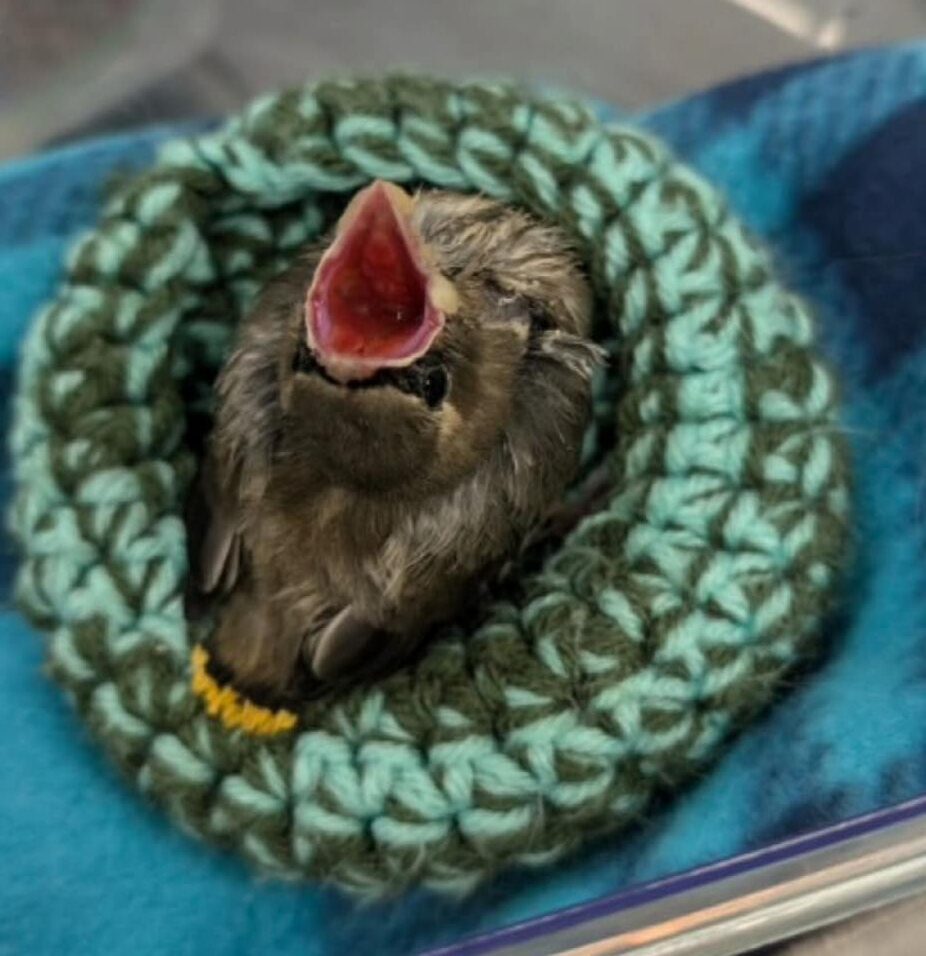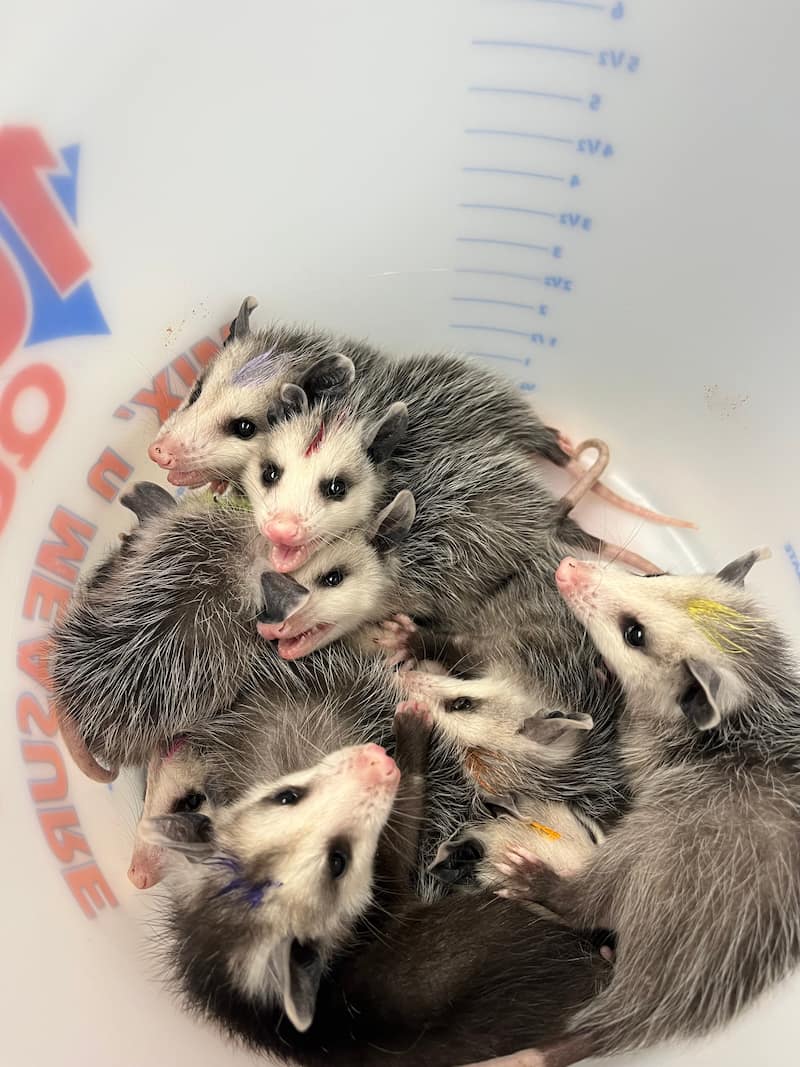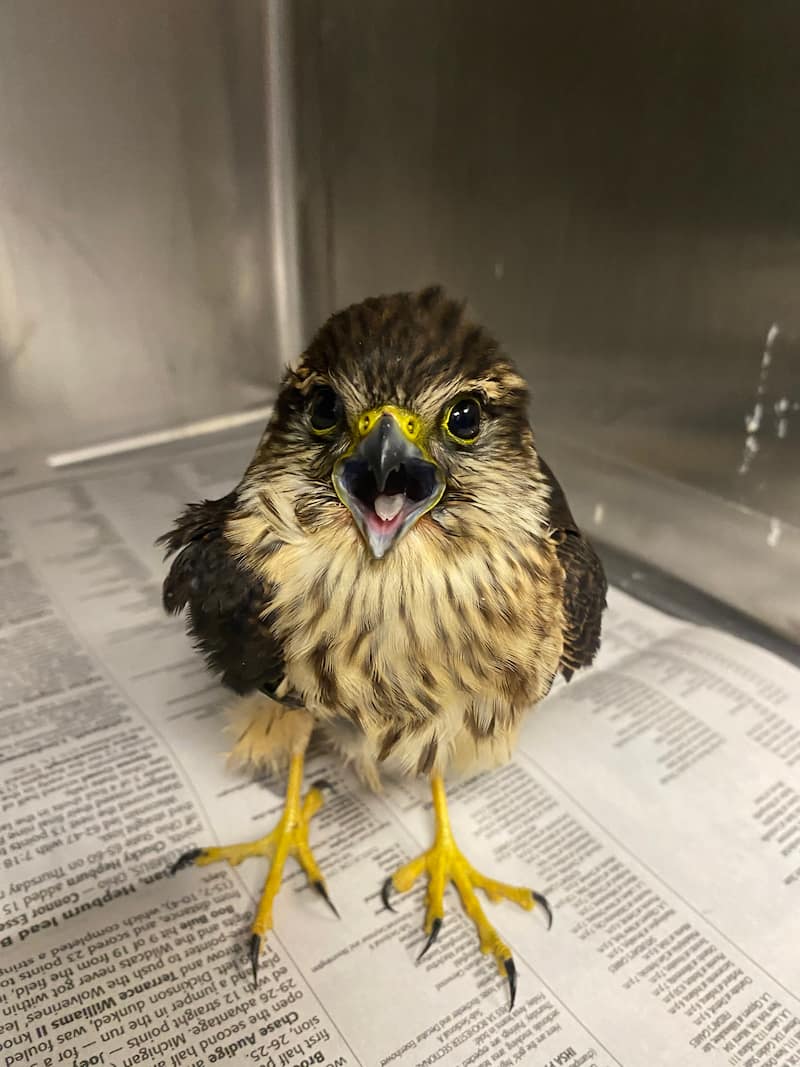In March of this year, a snowy owl (Bubo scandiacus) presented to the Wildlife Medical Clinic with an injury to his left wing. This is a rare species to be seen in Illinois, with only six having been admitted to the WMC in the last 10 years! When migrating south from the Arctic Circle, it is usually the young males who travel the farthest, as they do not yet have an established territory. This tendency for males to migrate furthest, and the relatively pale and sparse brown speckling in this patient’s feathers, we believe he is male. Conversely, female snowy owls tend to have more numerous, pronounced, dark brown or black speckling across their bodies.
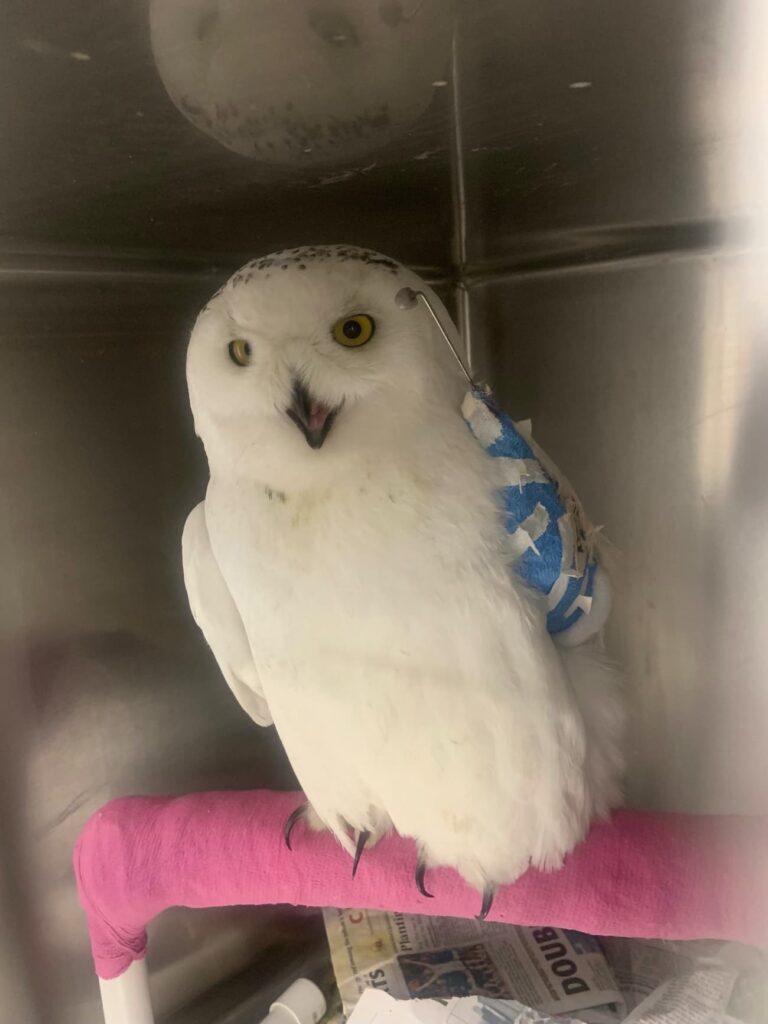
His initial exam was relatively unremarkable, with the only appreciable abnormality being some staining present on the left wing near his elbow. Concerned about a possible wing injury, we performed a “flight test” early on in his assessment. This is when one person gently holds the bird’s legs and moves them through the air, allowing us to evaluate the bird’s response to flight-like movement as well as their ability to balance by moving their wings in response to changing position or a quick descent. This owl did well, seeming mentally appropriate with only mild deficit in the left wing. The next step was radiographs under anesthesia. While not palpable on his initial examination, these radiographs allowed us to identify a fracture of the left radius close to the elbow joint.
Unlike in mammals, the bird radius is thinner than the ulna. In some cases, radial fractures can be repaired non-surgically by bandaging the wing and using the intact ulna as a splint. For this owl, and in many other birds of prey, precise wing function is a high priority. When hunting, owls must be able to fly completely silently, which is achieved by their aerodynamic structure and feather alignment. They must also be extra agile, able to alter their position in the air with micro-adjustments of the wings to grab prey mid-flight. This level of function can be threatened by imperfect anatomical alignment of the bones or synostosis. Synostosis is when a fractured bone heals by attaching itself to another bone nearby. In this case, the fractured radius could potentially fuse with part of the ulna, which would limit wing rotation.
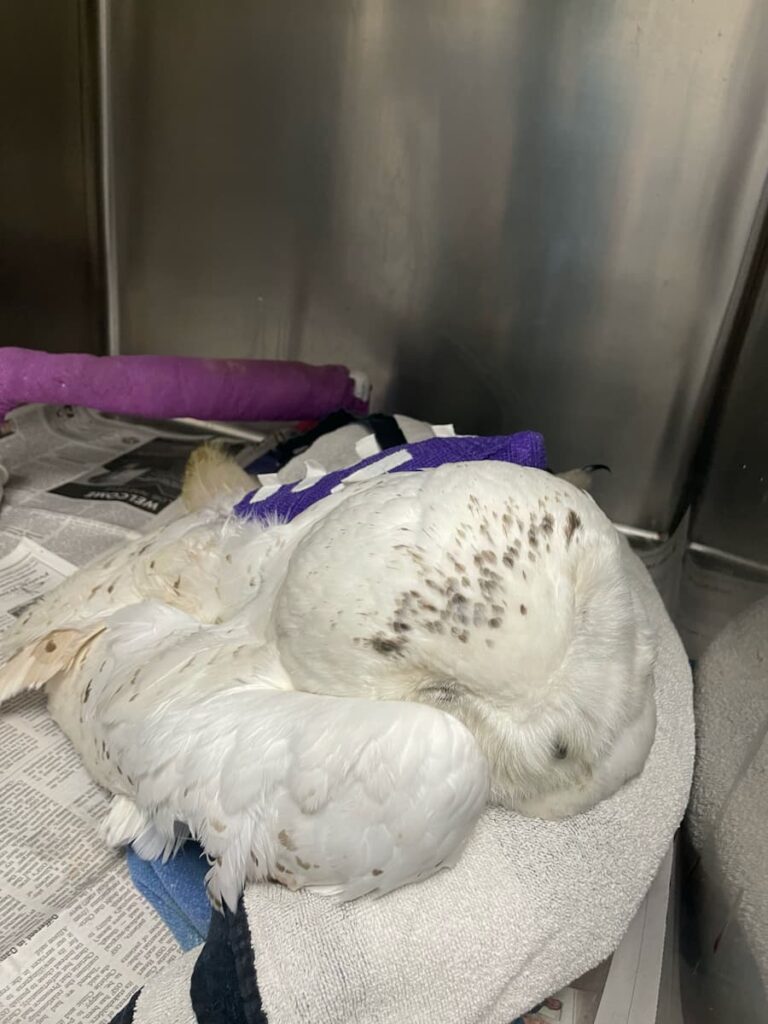
To give this owl the best chance of successful recovery, the fracture was treated surgically. A long surgical pin was inserted into the medullary cavity (or center) of the bone. Once threaded through the fracture site, this intramedullary (IM) pin would help to keep the bone aligned and limit movement of the fracture edges for smooth regrowth. A small tip of this pin was left protruding from the wrist, bent away, and topped with some acrylic to blunt it. This tip is intended for later removal of the pin once the bone is healed. For about a week after surgery, this patient did great. He was rather spicy, feisty, and alert – a good sign he was healthy enough to be upset! However, this owl was especially naughty and greeted students one afternoon having removed his own intramedullary pin early and against doctor’s orders. Replacing the pin within the fracture site would have required additional surgery, back tracking on healing time and causing greater stress to the patient. Instead, it was confirmed that the fracture was not yet totally stable but still in the proper place and on its way to healing well. At this point, the wing was wrapped for stabilization, and the radius was allowed to heal without the internal fixation. After another week, just two weeks post-op, radiographs confirmed that the fracture site was healing well, stable, and that synostosis with the ulna had not occurred.
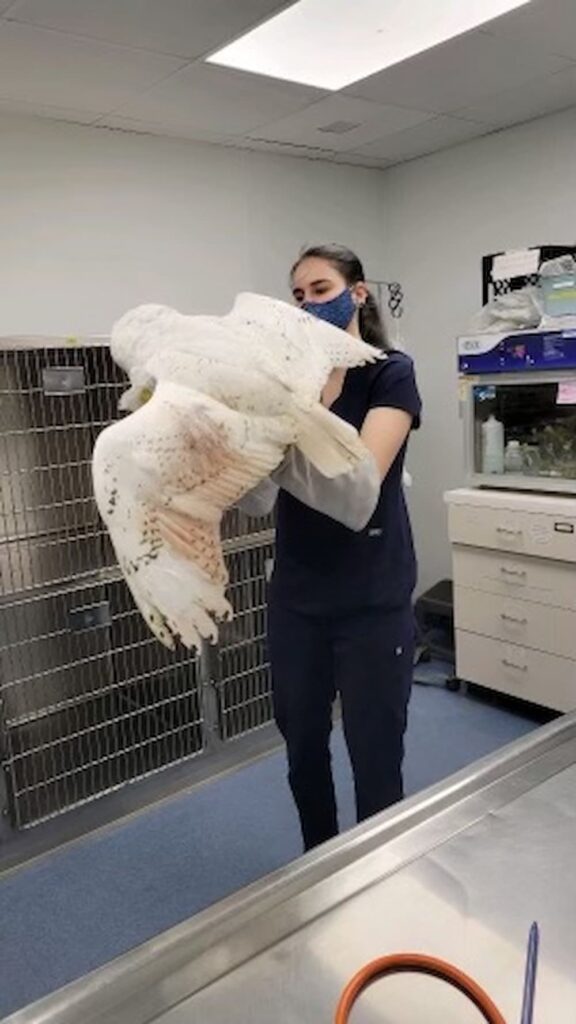
From then on, the owl did not need his wing wrapped, and he could start physical therapy. Physical therapy for the wings helps to keep the ligaments from contracting over time and to maintain their flexibility. Having done well throughout his fracture healing and physical therapy, we were able to transfer this owl to a licensed wildlife rehabilitator to continue his flight testing and recouperation. As the healing process prevented him from migrating north to cooler temperatures in the spring, this owl will spend the summer in Illinois waiting for cooler weather and a chance to fly free again. In the interim, his caregivers have their work cut out for them, as they protect him from the current outbreak of Highly Pathogenic Avian Influenza (HPAI), other infectious diseases normally present regionally this time of year, including West Nile Virus and Avian Malaria, and our warm summer temperatures to which he is not adapted. He will stay in Illinois until the weather gets cold again in November or December, when he can return to the arctic along with other migrating snowy owls. I bet his “what I did this summer” story will be wild!
Written by Maural Sowlat, class of 2024


